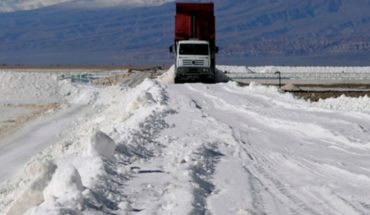The March 2020 Composite Economic Activity Index (ICAE) showed a deepening recession that began in November 2017, covering 28 months in duration and a fall in the economy, in terms of Gross Domestic Product (GDP) of 8.6%, at an average annualized rate of 6%. But, as a result of the coronavirus pandemic, it was sharpened in April, where some activities, such as in the automotive industry, were paralyzed to the point of not producing a car, estimated the economists Juan Mario Jorrat and Pablo Agustín Pero, of the Center for Research of the Economic Cycle and Growth (Cincec) and the National University of Tucumán (UNT), after updating the values of the ICAE.
To determine the cost of social isolation, preventive and compulsory, economists took as a starting point a level of GDP for 2019 of us 430 billion, and since quarantine began in the last third of March, when activity contracted 1.5%, 0.6% is explained by the effect of the pandemic, some u$s 2,400 million. In addition, to estimate the fall in April, UNT economists note, “The record of the pure recession effect and that the 30 days the decline was proportional to the 12 days of quarantine in March, another $6 billion,” totals about $8.4 billion in that period.
“If the fall of the Argentine economy is added to the quarantine, a drop in the 2.3 per cent activity indicator is conjectured by April 2020.”
The ICAE provides monthly information to measure aggregate economic activity, and gives a reasonable idea of the evolution of the situation in the short and long term.
In the case of March, “it is noted that the ten base matching indicators record contractions in their magnitudes. In addition, they can be ordered according to the relevance of the recession hit, based on the monthly variations of each of them.” In addition, Jorrat and Pero managed to determine the total impact of the recession, through the analysis of economic cycles, against the previous peak: “Of the 10 matching series, registered private employment is the least affected, 5.0%; then 8.2% GDP and EMAE 9.4% follow, because their content of services that respond to the vegetative growth of the population make them less sensitive.”
On the contrary, the real income of registered private sector workers (20.9%), industrial production (21.4%) were greatly affected and total national revenue (21.6%). But, the biggest negative impact of the pandemic was observed in construction 33.3%; total sales 37.4%; imports of goods 55.9%; and the sale of new cars 72.8 percent. And the numbers for April and May don’t look larger, because the easing of confinement began with trade, but families in general face a severe deterioration in the ability to buy their income. And, for the worse, many are dominated by uncertainty about their work, particularly those engaged in construction and labour-intensive sectors, such as most SMEs. In this note:





